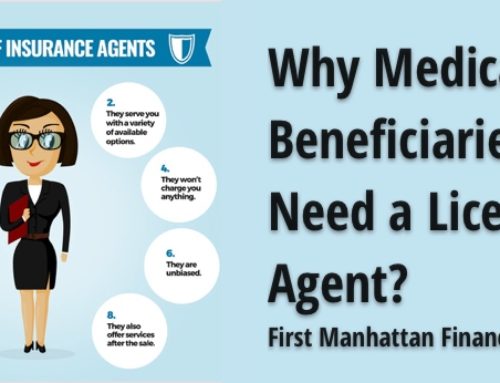When to Apply for Medicare
There are numerous times to enroll in Medicare, and each of those times has specific guidelines around applying and when coverage will begin. Comprehending when to enroll and the best time to do so is an essential part of getting Medicare.
Preliminary Enrollment Period
The Initial Enrollment Period (IEP) is the first time to sign up for Medicare and sign up with Parts A, B, C, and D throughout this time:
- 3 months before 65th birthday,
- Birthday month, and
- 3 months after the birthday.
Coverage will start no faster than the 65th birthday month.
Example: If the birthday is in July, the Initial Enrollment Period starts April 1 and ends October 31.
If the enrollment period is missed out on, there is another opportunity to enroll, but waiting might lead to late charges and a period without health coverage.
NOTE.
If you are not instantly registered, you can register for free Part A (if you’re eligible) during or after any time your Initial Enrollment Period starts. Your coverage start date depends on when you’re signed up. If you have to purchase Part A and/or Part B, you can just register during the enrollment time.
NOTE.
If you want to wait until the month you turn 65 years od (or the 3 months after you turn 65 years old) to enroll, your Part B coverage will be postponed. This might trigger a gap in your coverage.
Unique scenarios (Special Enrollment Periods).
As Soon As your Initial Enrollment Period ends, you may have the chance to sign up for Medicare throughout a Special Enrollment Period (SEP). If you are covered by a group health plan based on existing employment, you have a Special Enrollment Period to register for Parts A and/or B at any time as long as:
- You or your partner (or relative if you’re disabled) is working.
- A group health insurance covers you through the employer or union based on that work.
You also have an 8-month SEP to register for Part A and/or Part B that begins at one of these times ( whichever takes place first):
- The month after the work ends.
- The month after group health plan insurance coverage based on existing work ends.
Usually, you do not pay a late enrollment penalty if you register throughout a SEP.
You may also get approved for a Special Enrollment Period for Parts A and B if you are a volunteer, serving in a foreign country.
NOTE.
COBRA and retiree health plans are not considered coverage based upon existing employment. You’re not qualified for a Special Enrollment Period when that coverage ends. This Special Enrollment Period likewise does not apply to individuals who are qualified for Medicare based upon having End-Stage Renal Disease (ESRD).
KEEP IN MIND.
If you have a Health Savings Account (HSA) with a High Deductible Health Plan (HDHP) that are based upon your spouse’s current work, you may be eligible for a SEP. To prevent a tax penalty, you must stop contributing to your HSA at least 6 months before applying for Medicare. You can withdraw cash from your HSA after enrolling in Medicare to assist pay for medical costs (for example, deductibles, premiums, coinsurance, or copayments). If you would like to continue to get health benefits through an HSA-like benefit structure after enrolling in Medicare, a Medicare Advantage Medical Savings Account (MSA) Plan might be an option.
General Enrollment Period.
You can likewise register for Parts A and/or B during January 1st and March 31st yearly if both of these conditions apply:
- You didn’t register when you were eligible for the first time.
- You are not eligible for a Special Enrollment Period (see above).
Your coverage will start on July 1. And you might undergo charges.
Annual Enrollment Period.
Anybody can change their coverage and enroll in a Medicare plan each year, from October 15th to December 7th.
- If you are in Original Medicare, you can switch to a Medicare Advantage plan – or vice versa.
- You can make changes from a Medicare Advantage plan with drug coverage to the one without or vice versa.
- You can join or refuse a Medicare prescription drug plan.
- You can likewise update your coverage by changing to a brand-new plan from your current insurer or changing to a brand-new insurance provider.
If you choose to make changes during the Annual Enrollment Period, your new coverage will not begin until January 1.
Tip: If you’re pleased with your existing coverage, you’re not needed to make a change. In many cases, your current Medicare plan will automatically renew on January 1.
Medicare Open Enrollment Period Explained.
During the Medicare Advantage open enrollment period (from January 1st to March 31st), Americans who are already enrolled in Medicare Advantage can:
- Change to Original Medicare (and enroll in a Part D plan; access to Medigap might need medical underwriting, depending upon the situations.).
- Change to a different Medicare Advantage plan.
- Only one plan change is enabled during this window (unlike the fall enrollment period, when individuals can change their minds numerous times).
Re-evaluating Medicare Coverage During ANNUAL Enrollment.
Each year, an insurer can make modifications to Medicare plans that can impact how out-of-pocket costs such as monthly premiums, deductibles, drug costs, and provider or pharmacy “networks.” A network is a list of physicians, health centers, or pharmacies that negotiate costs with insurance companies. They can also make changes to the plan’s “formulary” (list of covered drugs). Offered these annual modifications, it is a great concept to re-evaluate your present Medicare plan each year to make certain it still satisfies needs. Below are some fringe benefits of re-evaluating coverage during Open Enrollment:
- Changing to better prescription drug coverage can reduce out-of-pocket costs and guarantee drug plans still cover required prescriptions.
- Conserve cash and keep your medical professional in-network by changing Medicare Advantage or Part D strategies. Research study reveals that the typical consumer can save $300 or more years if they evaluate their Part D coverage.
- Discover a higher quality plan. Plans that are a 5-star rating are considered high quality. If you are enrolled in a plan that is less than 3, consider utilizing Open Enrollment to change.
Medicare enrollment checklist.
When you’re ready to register for Medicare, you have three choices. Apply by phone, personally at a U.S. Social Security Administration workplace, or online. If you decide to enter an individual, it’s finest to make a consultation initially.
Here’s what you require to take with you if you register face to face:
- An initial or qualified copy of your birth certificate or other evidence of birth.
- Evidence of the United States citizenship or legal residency if not born in the U.S.
- Your Social Security card number if you are already getting advantages.
- A copy of your W-2 type( s) and/or self-employment income tax return for last year.
- U.S. military discharge documents if you served before 1968.
- Medical insurance information (type and dates of coverage).
- If you are obtaining a partner or registering for Medicare by phone (1-800-772-1213) or face to face at the Social Security office, you may need to submit extra details.
Here is what you need to know if you register online:
Dates and birthplace. If born outside the U.S., you will require your birth nation and Permanent Resident Card (Green Card) number.
Information about Health insurance. Start and end dates for group coverage information and work.
To obtain Medicare online, go to www.socialsecurity.gov/benefits/medicare ( Select “Apply for Medicare Only”).
FAQ
If you already signed up with Medicare and have a Medicare Advantage Prescription Drug Plan and you are happy with it, you do not need to do anything. It will automatically roll over to next year unless the MAPD or PDP plan is getting disconnected.
You need to find a plan that fits your needs and Enroll from October 15th to December 7th. You can enroll in different plans as many times as you like, but the last plan you enroll in will be effective January 1st.
Open Enrollment runs from January 1st till March 31st. Keep in mind that only 1 change is permitted during this period!
You can switch to Original Medicare or Switch to a different Medicare Advantage plan.
You can make different changes, none of which involve medical underwriting. (Before 2021, people with end-stage renal disease could not switch to Medicare Advantage during the open enrollment period, but as of 2021, that’s no longer the case).





